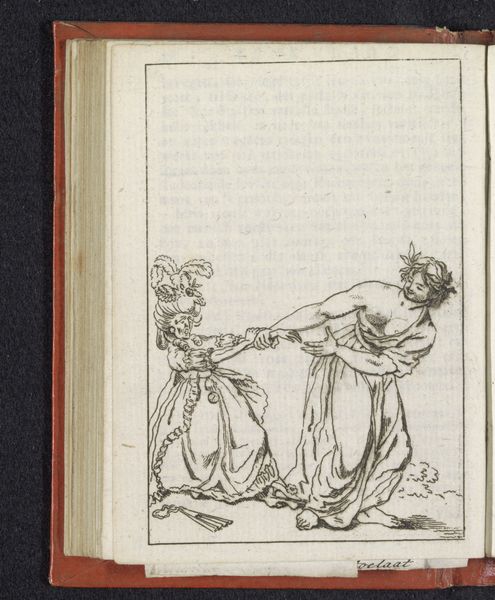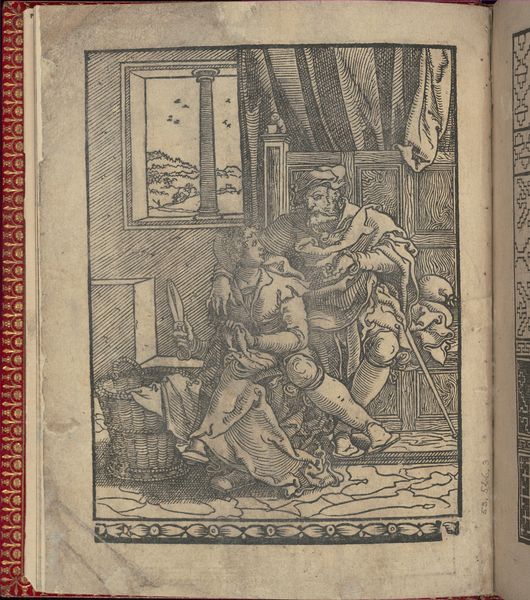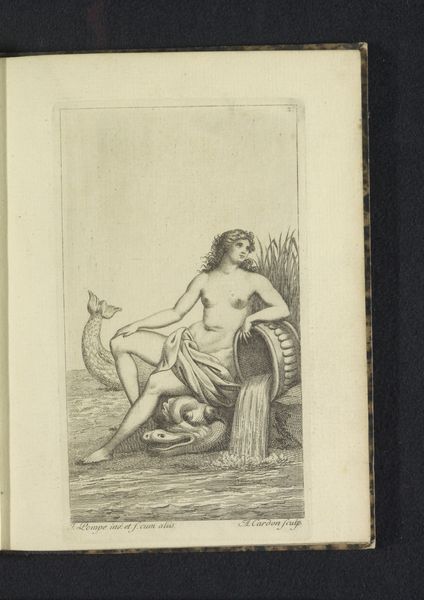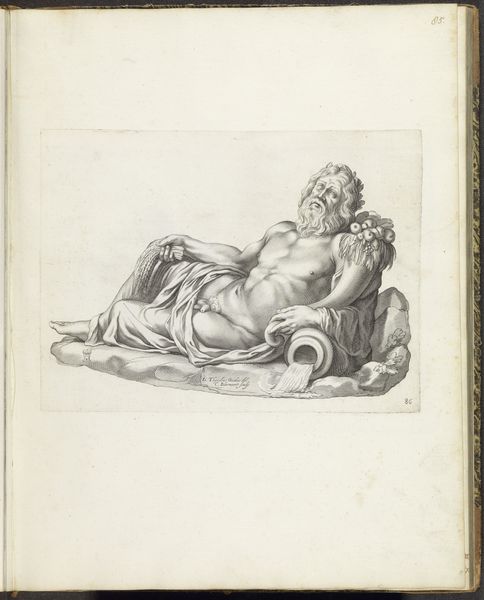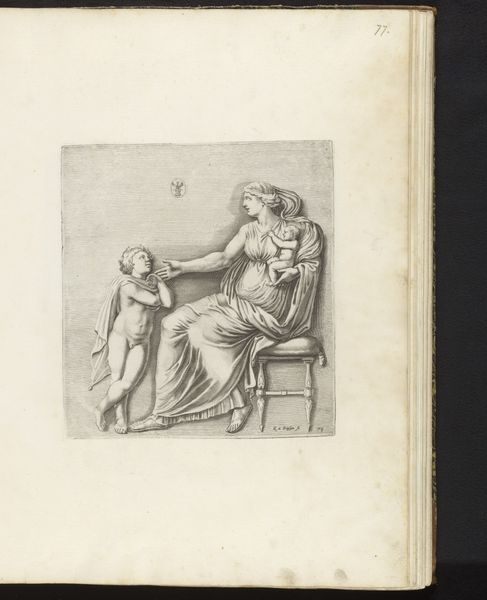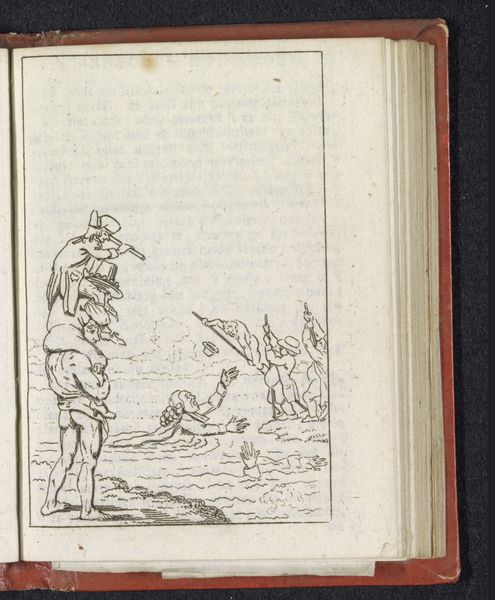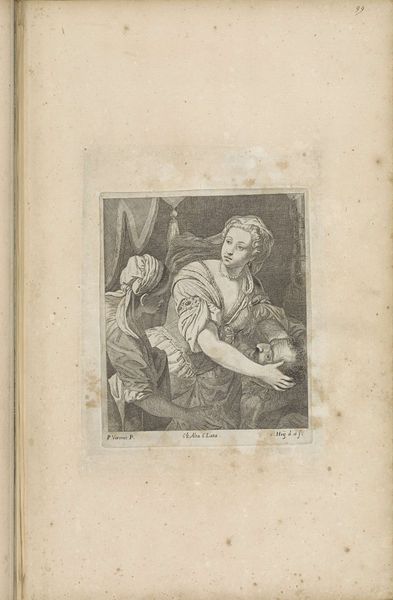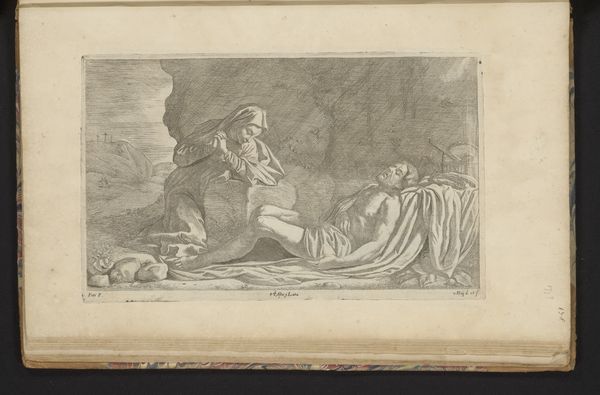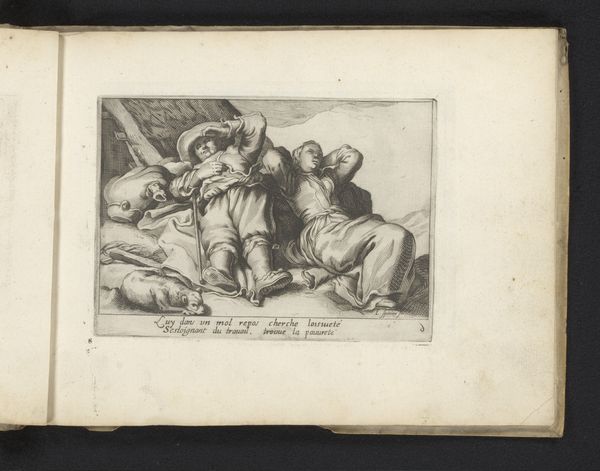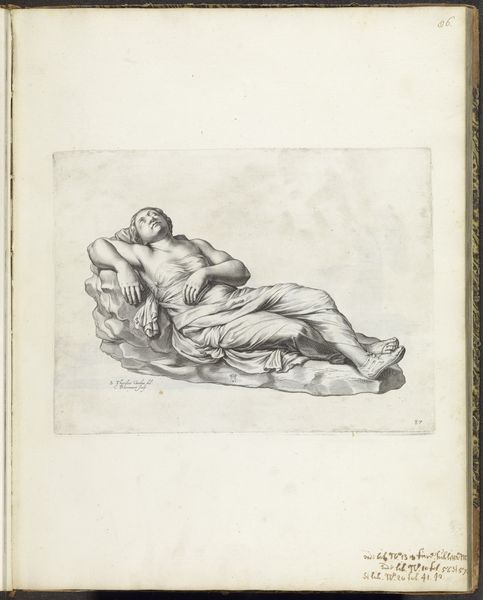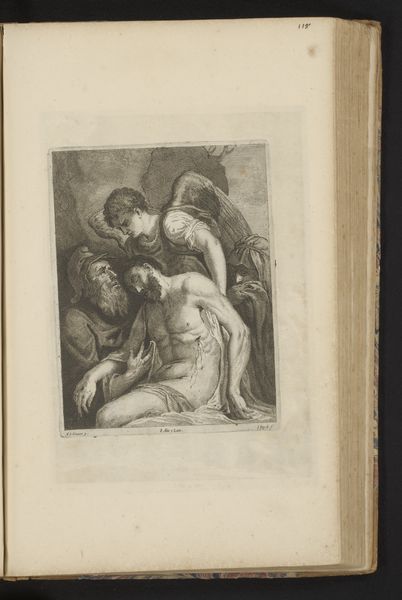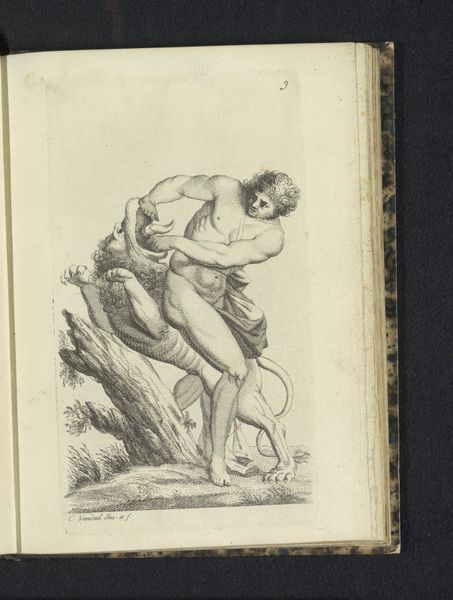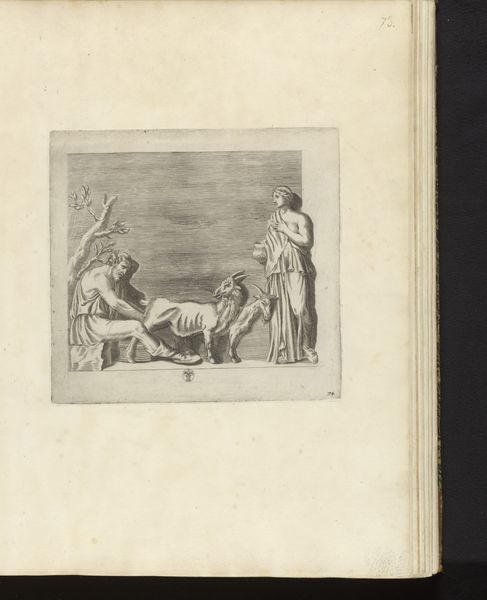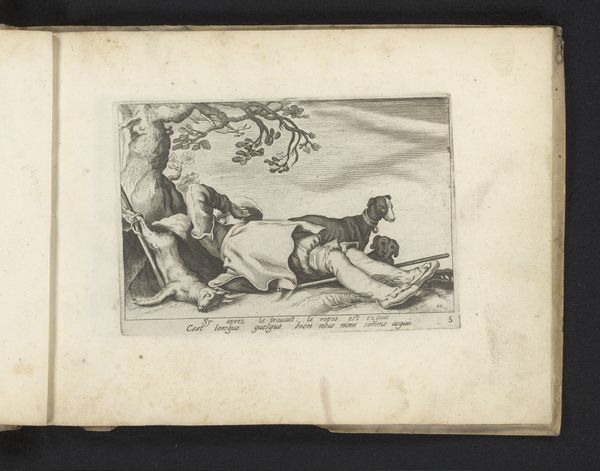
#
aged paper
#
toned paper
#
sketch book
#
personal sketchbook
#
coloured pencil
#
sketchbook drawing
#
watercolour illustration
#
storyboard and sketchbook work
#
sketchbook art
#
watercolor
Dimensions: height 115 mm, width 80 mm
Copyright: Rijks Museum: Open Domain
Curator: Welcome. Before us is a fascinating sketchbook page by Pieter van Woensel, created sometime between 1797 and 1798. It is entitled “Diabolocratie”. Editor: My first impression is stark. It is a spare composition that focuses the eye intensely on this lone figure and his… collection of items and fowl. Curator: Yes, it's quite curious. The sketchbook context is key, revealing not a finished piece, but a glimpse into the artist's process, perhaps exploring satirical ideas. This relates to Woensel's engagement in social critique and reflects on the prevailing climate. The sketchbook itself, the quality of the toned paper and the application of watercolor hint at both financial constraints and artistic resourcefulness. Editor: From a formal standpoint, the figure's posture creates a strong diagonal line, pulling us downward to the objects at his feet: a sort of scepter and written note reading "Diabolocratie" as if declaring an infernal kingdom of self. His face, though small, projects a weighty sadness, intensified by the bare background. This all coalesces into a symbolic arrangement emphasizing despair or resignation. Curator: It is worth pondering on Woensel’s access to materials; these colors suggest more than mere sketching. Also consider the societal implications: what message was Woensel trying to express regarding power structures? Who would view this work, and under what circumstances? The limitations the materials pose reflect the possibilities, or lack thereof, to transcend social order at the time. Editor: You know, I still can’t help but interpret the stark composition as adding an air of loneliness and self-reflection that material access cannot fully address. The interplay between the figure and the props, whether he lacks access to different material items, suggests to me some commentary about power, which comes through as surprisingly melancholic in this study. Curator: Absolutely, and perhaps that melancholy speaks to Woensel's recognition of the complex socio-political forces at play and their effect on people. Editor: A thought-provoking image from a clearly inquisitive artist. Curator: Indeed, and I believe reflecting on Woensel's craft deepens our understanding of art's crucial dialogue within his environment.
Comments
No comments
Be the first to comment and join the conversation on the ultimate creative platform.
